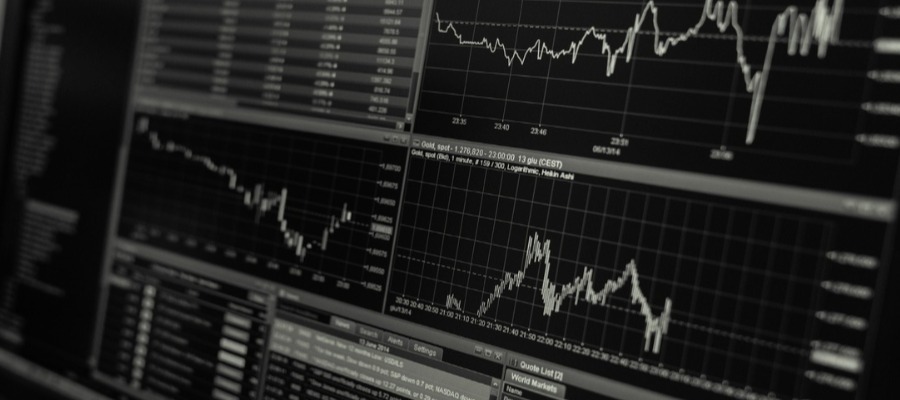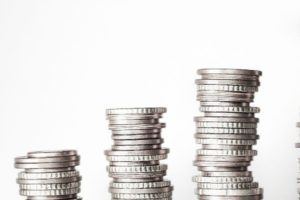Investing in the stock market is a brilliant way to grow capital. You buy well-established companies that have excellent growth potential, and as long as you hold those assets over the long term, you have a 90% chance of making money.
The problem, approximately every ten years, the stock market in the UK enters a bear market where the market falls 20% or more. This happened in 2008 during the financial crisis and has happened again in 2020 during the year of the covid-19 virus.
What Is a Bear Market?
When index’s start to fall, there are two terms investors need to be aware of, Corrections and a Bear Market. Corrections are when asset class falls 10% or more over a short period. They are expected in an everyday stock market, however, it’s the bear markets that cause investors to worry.
A bear market is when prices of securities fall by 20% or more across a broad range of market indexes such as the FTSE 100 or the Standard & Poor’s 500 Index (S&P 500), over a short period, such as three-months. A bear market is what we saw between 2000 and 2002 when the tech bubble burst, leading to a 50% drop in the FTSE 100. It happened again between 2007 and 2009 during the financial crisis when the FTSE 100 went from 6,731 on October 12th, 2007 to 3,512 on March 3rd, 2009, a drop of about 48%.
What Triggers a Bear Market?
A bear market is caused by a loss of confidence in the stock market. Rather than investors looking forward to an increase in future earnings, they now fear it. If ever there is a time when investors start to think that there will not be growth in a company, its stock price will decline. When companies stop growing on a larger scale, it suggests a weak economy which in turn could lead to unemployment and the general public reducing their spending.
Once the price of stocks starts to decrease in value, the uncertainty causes a snowball effect where uncertainty and volatility is generated in the stock market. As investors begin to sell their stock to protect profits or prevent losses, the price of securities falls further and further, until the buyers re-enter the market.
How Much Have I Lost?
Logging into your ISA or Investment account is often not a pretty experience, but there are things you can do to make the experience better, and things you can do, to make the whole situation worse. The worse thing you can you do is to start selling. If you have a crystal ball and can predict the top and the bottom, selling is a great way to make money.
The problem, I do not have one, I cannot predict the top, and cannot predict the bottom. What generally happens when I try to predict the market, I miss the first 5% decrease, which of course, I put down to a minor correction. Somewhere into the next 5% decrease, I get nervous, usually at the lower end of this range, and sell my stock. We are now 8% off the top. The market carries on its decease, and I think I am a genius. But when to get back in? The market falls into a bear market correction and bottoms at down 25%. Do I buy at the bottom, no? Why, because I am convinced it could fall another 10%.
I would suggest a better way to invest is to invest for the long term. This means not worrying about the bumps along the road, but investing in companies that are financially secure, and growing over the long term. While it is terrifying to think about how much you have lost, it will recover and will grow in the future. While you are travelling through this journey, remember the following.
Ignore the Media
The media exists to sell papers and advertising, and nothing makes people read a newspaper or an article on finance website more than doom and gloom. If the stock market drop into correction territory, headlines are likely to say the world is coming to an end. They will have expert analysts suggesting it because of a bad economy and its possible to cause the market to drop a further 10%.
The problem is, like all of us, they don’t have a crystal ball, and are just trying to sell newspapers. For every expert that tells you the stock market is going to fall 10% further, there are those that will tell you the opposite. The best plan is to take all media with a huge pinch of salt and not to make rash decisions based on a newspaper headline.
Compound Interest
If you don’t want to buy a single stock during a down-turn, think about an Index ETF and buy a small amount each week. I generally invest in the stock market every month. At the end of each month, whatever is left in my bank account, I put into the stock market through either an ISA or an Investment platform.
During the recent Covid bear market, I stopped buying individual stocks, but I have carried on buying a FTSE 100 ETF on a weekly basis. For two months, between March and April 2020, I have been buying 100 shares of the iShares FTSE 100 ETF (ISF). This is probably my favourite pure play FTSE 100 ETF given it has an annual charge of 0.07% and a very low spread.
On March 2nd, I picked up 100 shares of ISF at £6.62, however, over the next two month, I also managed to buy 100 shares at £5.18, which is almost the bottom. As it currently stands, my two-month buying project has netted me 1,000 shares, with an average entrance of £5.46.
It currently stands at £5.97, leaving me with a small profit, but I generally believe if I hold this for another few years, I will have a serious profit. Remember, I picked up shares at the bottom. Without pound cost averaging, nothing more than pure luck would have got me close to buying in at the bottom.
Buy List
During any bear market, it a great time to think about investing further into your winners. In my experience, winners keep winning, but it’s also a great time to pick up a few of those stocks that you’ve wanted to buy, but thought they were too expensive.
During any market correction, company valuations will reduce, which gives you a great opportunity to buy at a much cheaper valuation. How do you work this out? You look at a companies Price-to-earnings Ratio (PE Ratio).
What Is Price-to-Earnings Ratio – P/E Ratio? The price-to-earnings ratio is the ratio between a companies current share price and companies per-share earnings. It is also known as the price multiple or the earnings multiple. You work out PE Ratio by dividing a company’s market value per share, by its earnings per share.
Investors use PE ratio’s to determine the relative value of a company’s shares and then compare this ration again either its own historical record or possible compare it against the average of its market competitors.
As an example, the FTSE 100 currently has 12 month forward PE ratio of 15.22. This is high when compared to an average over the last 20 years which is 12.22. This suggests the FTSE 100 is currently expensive.
Final Thoughts
Bear markets are a totally normal part of investing on the stock market, and they will happen during your investing time horizon. The most important thing to remember, the world is not coming to an end, and the stock market will recover.






